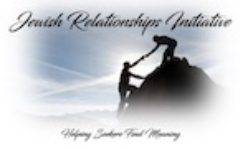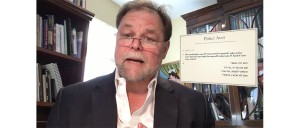I had the privilege of joining 17 other rabbinic colleagues on a mission to Israel. The Federations of Greater Philadelphia and Metro West as well as the WZO (World Zionist Organization) sponsored this mission. It was a four-day whirlwind; up, north, down, south, east and west, I felt like the rabbinic equivalent of a Lulav. It was a very interesting trip, as much for what was said as for what was not said.
The WZO agenda tried to create a narrative for us. But the story they tried to tell was different from the one I took away from the trip. There was no shortage of Hasbara. The and WZO tried to portray a society that is accepting and growing, wanting peace with those who want likewise (the Druze we met along the Lebanon border in the town of Hurfeish), and ready to take on the civil issues (the Ethiopians we met in Rishon LeZion). More troubling issues remained off-limits however, and the conversation regarding the Palestinians issues came down to better advocacy (a presentation by Stand with Us) and Ambassador Alan Baker’s legal explanation about why Israel is in the right and the Palestinians are acting without legal justification.
We also were witness to the nascent rise of spirituality in the secular society through the establishment of an Israeli Seminary and an organic lay-led movement creating a “Minhag Israeli” distinct and apart from American transplants. Along with this was a conversation about redefining Zionism in the modern context to appeal to the current generation and acknowledge current realities.
For me, these dots and created a picture of a society that is in many ways engaged in an internal existential struggle for its soul. As Israel has achieved the vision to become a Nation like other Nations, Israelis are finding this place insufficient. Realizing the dream has created a reality that leaves the heart and soul of the aspirational mythic idea of Israel unfulfilled. There is a struggle to find more. The Palestinian issue seems to be eating away at the hearts and minds of many Israelis as are many other issues creating a deep profound yearning. I saw and felt this when I visited last year during the war as well.
That struggle is present here in the US; we struggle to understand Israel and our connection. We are challenged to do a better job of facilitating the conversations and fostering relationships that are deep and enduring. I believe that the WZO approach appeals to a segment of the American Jewish Community already sitting in the pews of that denomination. But that leaves many of us standing outside and unsatisfied with the offering and that number is growing.
I was encouraged by the visits to the projects we support through Federation including our sister city, Netivot. At a youth center one of our more gregarious rabbis got down on the mats and wrestled a couple of the kids. Although Seth had the boy by several pounds, the short-lived match was great. We also saw the planned mural for the water tower of Netivot being created by our very own Philadelphia treasure, the Mural Arts Program. I have been a fan of Mural Arts for a while, watching its artists transform an often blighted urban landscape into a place of culture and hope one wall at a time. We can take pride in the many good things we do but I wonder how those things might be expanded further.
One important highlight, was the camaraderie and collegiality this trip fostered. Our rabbis represented a spectrum of beliefs and cut across denominations. Although our religious views and practices are substantially different, we found common ground to learn together, to create friendships together and to talk together. Of particular note was the insistence of our Orthodox colleagues to stop our trip for a Mincha service so that one of us, a reform woman rabbi, could say Kaddish for her father. So there we were on a playground davening Mincha together, a truly profound moment and an important lesson for us all.
 Stay safe and secure; find ways to support our people here and in Israel. Let us pray for peace.
Stay safe and secure; find ways to support our people here and in Israel. Let us pray for peace.
